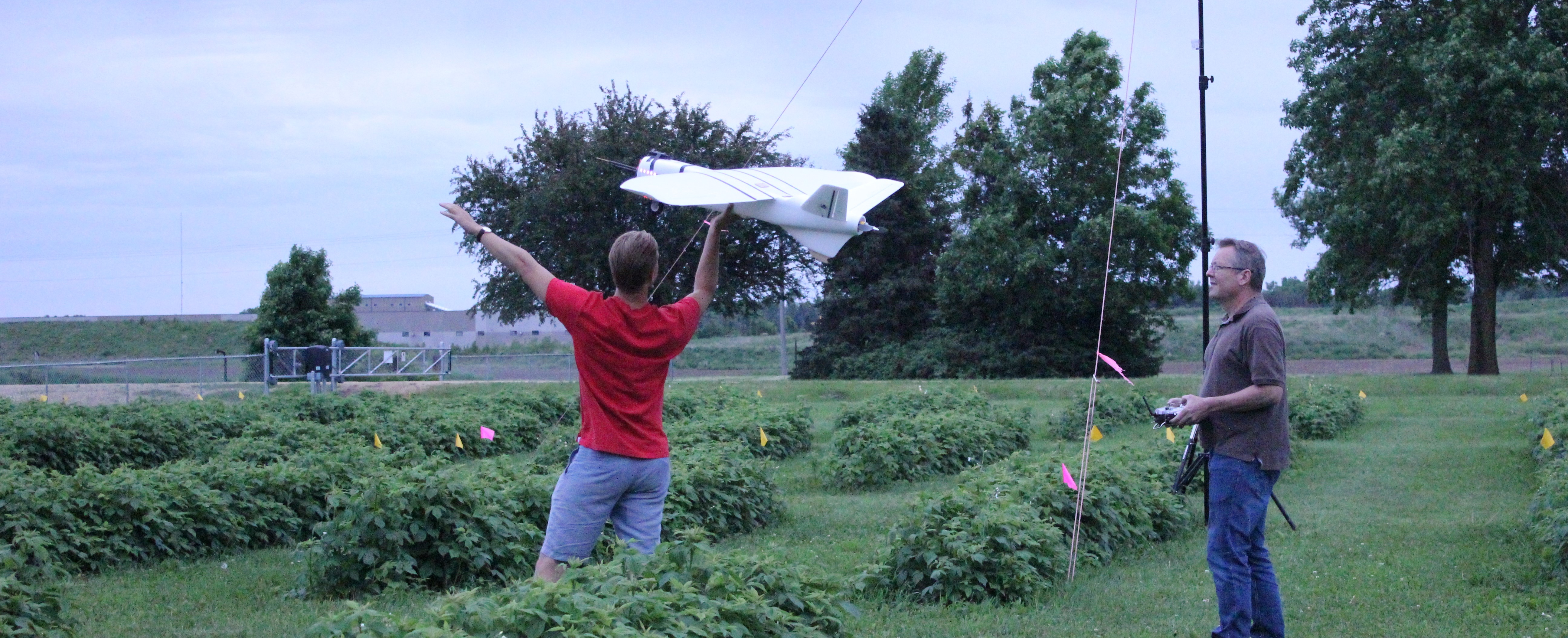
April 13, 2021
by MAGGIE NESBIT | Communications Intern, MITPPC
The invasive fruit fly spotted wing drosophila (SWD, Drosophila suzukii), first made its way to Minnesota in 2012. The females’ serrated ovipositors, a knifelike egg laying structure that allows them to cut into firmer fruit, means they cause much more damage to ripening fruit than other species of fruit fly. Spotted wing has caused crop losses of anywhere from 20 to 50 percent on raspberry crops in Minnesota, and poses an economic threat to fruit growers across Minnesota.
MITPPC researcher Mary Rogers, alongside her team of fellow researchers, are deep-diving into the possibilities of integrated pest management for SWD using an economic lens, a project that has spanned five years and will conclude this year.
“How do we help growers figure out how to manage this? It’s a new pest and we don’t know a lot about its basic biology. Anything we recommend for tools, pest management, and management tools for growers needs to make sense economically too,” said Rogers.
The first component of this project was understanding spotted wing’s basic biology in Minnesota, how it migrates, and how it gets here to overwinter. The second component focused on what kinds of management strategies are effective, and what kinds of management can be used by both organic and conventional growers. Because many berry farms market a “pick-your-own” experience, these growers are wary of what pesticides can be sprayed and how frequently.
The last component was the economics of these potential management strategies. Co-investigator and economist Gigi DiGiacomo took a look at the economic impact of the pest on the fruit industry in Minnesota. The main goal of this aspect was understanding how the pest has been affecting the industry economically, plus conducting a cost-benefit analysis of management tactics that the team was developing. Conservatively, SWD has cost growers $2 million in the raspberry industry alone. Rogers called raspberries “spotted wing candy.”
“We have a better understanding of the severity of it, and it’s on the radar of every fruit grower at this point,” said Rogers.
When exploring different management practices, co-investigator Bill Hutchison proposed experimenting with unmanned aerial vehicles (UAV), or drones, to find out if there could be evidence of SWD using jet streams to migrate. In collaboration with PhD candidate Anh Tran, and professor and aero-space engineer Demoz Gebre-Egziabher, the team used drones to investigate migration patterns of SWD.
Due to finding little evidence of the pest using air streams, this led to other questions. Through the method of passive trapping, evidence was found that SWD were flying in more at canopy height. They also found that the flies typically come in around June or July. What does this mean for overwintering, though? If SWD are overwintering, the problem could become worse and worse each year.
“Right now, we're just focused on managing them within the season, but if we have a lot of evidence that they're overwintering, we need to think more long-term. We need to think about how you use habitat management at the end of the season to reduce populations the following year,” Rogers said.
As far as managing them within the season, Rogers and her team have developed management strategies that are working well: frequent harvest times, exclusion netting, and botanical repellents.
Out of these methods, exclusion netting seems to show the most promise, according to Rogers. It comprises a single concept: enclosing the fruit so that flies cannot get in. It has been found that this netting is pretty equivalent to open-field environments. Blueberry growers utilizing this practice could see up to 100% protection against SWD pesticide-free, which is a huge win. However, growers do need to watch that they come in and out of the netting structures without letting any flies in. This may require a secondary entrance. Second, growers also need to be careful with pollinator requirements. The netting keeps the flies out, but it also keeps the pollinators out; pollinators might need to be introduced to the enclosed environment. Despite these concerns, exclusion netting has shown great promise and helps extend the season, protects the berries from extreme weather and birds, and increases its quality.
“In all of the scenarios, small-scale organic raspberry growers benefit economically from the applications of exclusion netting and the insecticides that we use, which are certified organic,” Rogers said.
PhD candidate Matthew Gullickson has tried a botanical repellent called Ecotrol, a blend of geranium oil, thyme, rosemary, and peppermint. Preliminary evidence shows, in raspberries, it achieved equal efficacy or protection to the best performing pesticide in the organic systems. Growers are very interested in botanical repellents, because it eliminates the possibility of building insecticide resistance.
“If the ultimate goal is to keep the flies off the fruit, it doesn't necessarily mean you have to kill the insects,” said Rogers.
According to survey data, growers are concerned about pesticide use, both from an environmental standpoint and a marketing standpoint.
“My hope is if we can show that there's non-pesticidal techniques that work and that they work economically, growers will be receptive to that. And I think that they will,” Rogers said.
Despite challenges emerging as a result of the COVID-19 pandemic, the team is continuing to add to their repertoire of four peer-reviewed papers (another is in review), 30 presentations to stakeholders and academic groups, and new spin-off projects.